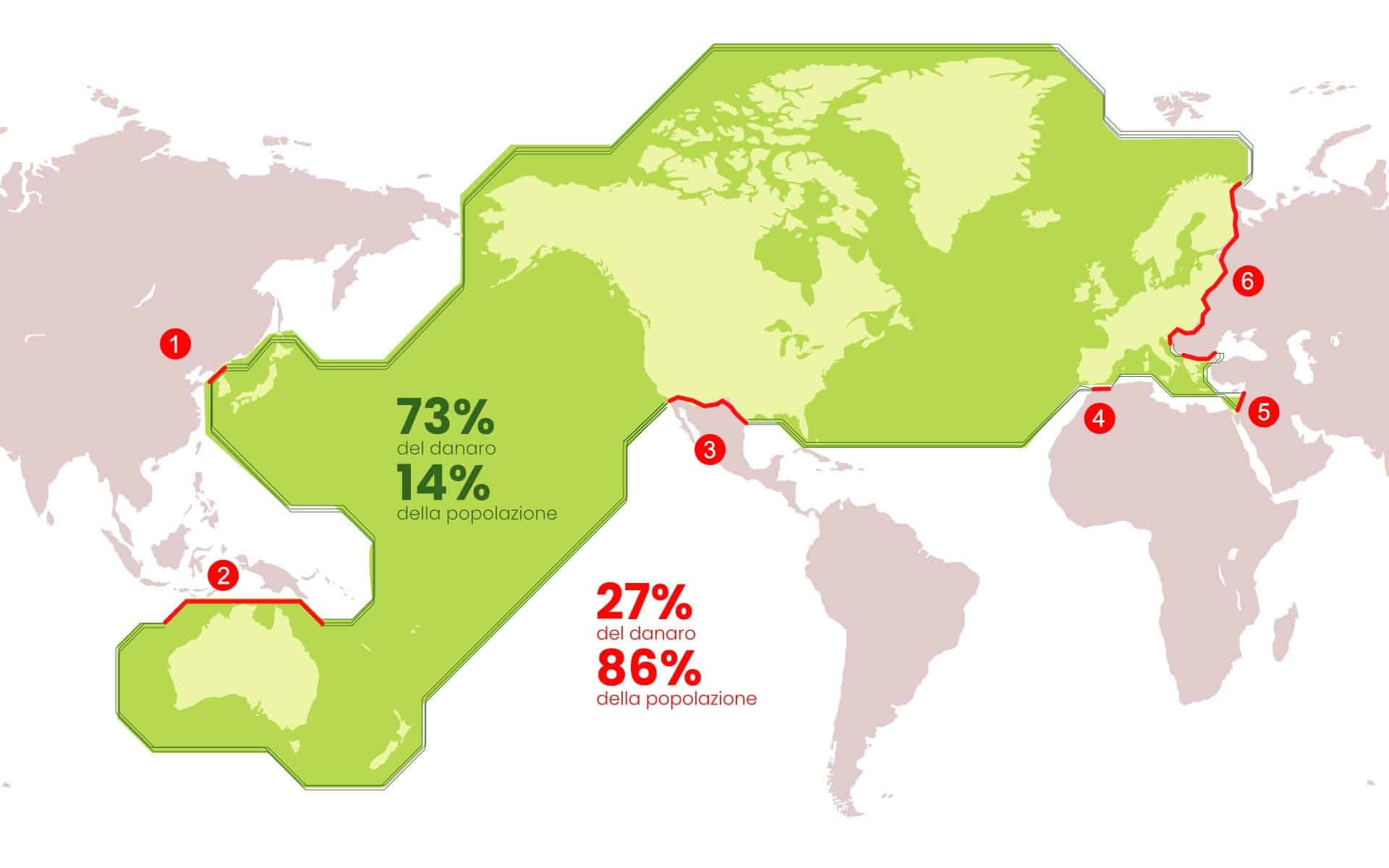Incredible if you think that this map has already been sketched out for a decade, but little by little it seems to be completed. More than ever we are about to live in a “walled-in” world.
Some features here, some features there may change, but the general picture of this "world wall" remains and is disconcerting: the rich countries are creating the largest gated community in the world.
Rarely do we have the opportunity to see it in its entirety: in the news, in the succession of current events, we see flashes that together do not shed light. And then the separate pieces do not necessarily belong to a single puzzle, to a single drawing. Perhaps to a single trend, yes.
The various walls, erected in different ways, at different times and by different administrations, each have their own peculiarities, but in the end they are all there for the same reason: keep the poor out of the door of the "evolved world".
Open parenthesis: Berlin. Closed parenthesis.
For a brief period starting in November '89, it seemed that history might take another path. I still remember the epic, happy destruction of the Wall that divided Berlin in two. Those breaches seemed like windows into the future: windows that closed just 12 years later, with September 11, 2001.
The culture of suspicion and fear of “others” have been a driving impetus for the rush to close ports, borders, even the mind of the West.
Here are the 6 main divisions that constitute a "cage", a global wall: inside there is 14% of the population who holds 73% of the economic resources, outside there is 86% of the population who holds 27% of the economic resources.

The demilitarized zone
Since 1953 this 250km long and about 3km wide strip has cut the two Koreas in two, which despite the recent openings are still formally at war;
The Australian Defense Force
The ADF (Australian Defense Force) patrols the waters north of Australia to keep refugee and refugee boats away;
The barrier between the USA and Mexico
Even if it is the workhorse of the Trump administration, a barrier that divides the USA from Mexico along all over 3000km of the border was already started under Clinton. After 11/XNUMX, construction intensified, with thousands of migrants dying trying to get through it.
The blocks in Ceuta and Melilla
Ceuta and Melilla are the two Spanish enclaves in Morocco: the point where Europe meets North Africa, and since 1993 (with European funds) rejects it. “Intelligent” barbed wire defenses, stuffed with sensors, which are periodically the scene of scenes more resembling tuna traps than flows of human beings.
The West Bank Barrier
In 2002, Israel began working to physically separate itself from the Palestinians: the reason? Always the same, the fight against terrorism. The wall, made of concrete and well beyond the "official" borders between Israel and Palestine, ended up including 9% of Palestinian territory: a sort of annexation, the Palestinians contest.
The political curtain of Schengen
Here too the border is changing and is in fact moving: physical walls are not included (even if some countries have already feared them) but the objective is always the same. Those who are inside have no limitations, at least formally, compared to those who are outside. 6 years after the fall of the Berlin Wall, just 80km away, Europe has built a larger and invisible one.
Obviously, and unfortunately, there are many other walls, but these give a good idea of the area covered by the "world wall", or should I say fence.
How many walls
There are wall “minors” even within this western area, such as that of Euros, born in 2012 to divide Greece and Turkey. Or like the city of Nicosia, divided by a wall like that of Berlin.
Then there are walls that divide "poor" nations from each other, like the one that India is building to physically divide itself from Bangladesh (in an area with strong risks of war with Pakistan, war that could also involve nuclear weapons).
Other walls divide communities within the same nation, such as the 99 "peace walls" that separate Catholics from Protestants in Belfast, or the divisions that in Brazil keep the rich sections of the population away from the poor.


